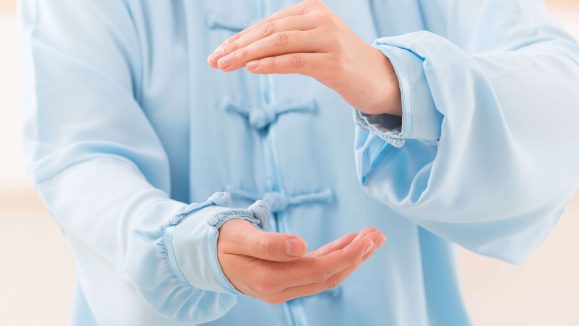Ever had one of those moments when you felt like you were detached from reality and that everything around you seemed surreal like it was in a dream? For many of us that’s how the initial stages of the COVID-19 pandemic felt, and it took months for us to accept the ‘new normal…’ but accept it we had to do. Eventually, we adapted, and got used to the changes in our daily lives and the disruption they caused, but if you went beyond detachment from reality and also suffered from a detached retina… that would have been all the harder of course.
That of course is what happened to many patients during the COVID-19 pandemic as fate spared no thought for people already locked down and miserable; Ocular booboos still had to be doled out. We recently covered a study on the trends of anterior segment ocular trauma during the pandemic and in this article, we’ll be doing the same for the posterior segment. Originating in the same country (that being India) combining both reports provides some fascinating insight into how ocular injuries occurred during that challenging time and what physicians can learn for the next pandemic (because yes, it’s inevitable, sorry).
Changing Patterns of Posterior Segment Trauma During the COVID-19 Pandemic: A Regional Analysis from the Bodhya Eye Consortium was conducted at six tertiary eye care institutes in northern and central India. All six are part of the Bodhya Eye Consortium, a group that was set up to support the development of evidence-based and consensus-led protocols through consistent big data gathering. All the participating institutes were referral centers that followed standard protocols of comprehensive eye check-ups for their patients.
Big Realizations from Big Data
This big data included details on the demographic profiles of patients including age, gender, and the geographical location of presentation, ie, rural or urban. It also included details of the trauma sustained such as the place of injury, object causing the injury, mechanism of injury, nature of the injury, the time interval between injury and presentation, prior consultation, clinical presentation, and treatment received. Patients that were considered for surgery involved those diagnosed with hyphema, cataract, lens subluxation/dislocation, intraocular lens (IOL) drop, vitreous hemorrhage, endophthalmitis, retinal detachment, giant retinal tear, retinal dialysis, panophthalmitis, epiretinal membrane, and macular hole.
A total of 1,357 patients presented with a history of ocular trauma in the COVID-19 period (Group A) out of which 206 (15.1%) patients had posterior segment involvement. In the pre-COVID-19 period (Group B), 1388 patients presented with ocular trauma out of which 199 (14.3%) patients had posterior segment involvement.
In both groups the majority of patients were male and the mean age of the study population was comparable in both groups. There was no observable difference between the two groups’ demographic profiles or their geographical locations.
When it came to the results the researchers behind the study did find that there was a significant increase in the time to presentation during the COVID-19 period (16.59 days) as compared to the year before (9.41 days). This was attributed to the lack of available transport during the lockdown, fear of visiting hospitals, and lack of access to the required medical care with trained posterior segment surgeons
Home is Where the Danger Is
As a result, while the researchers found that the number of reported ocular injuries was the same in Groups A & B (during COVID-19 and before), far more injuries were sustained at home. A total of 120 (58.2%) patients sustained ocular trauma at home in Group A as compared to 80 (40.2%) patients in Group B. The significant increase in injuries at this location was attributed to a number of factors including a lack of domestic help forcing people to perform household repairs and maintenance on their own without using any protective gear, sports-related injuries, and domestic violence.
The study found that the most common injury-inflicting agent in Group A was a metallic foreign body (FB) in 54 (26.6%) eyes followed by a wooden stick in 43 (20.8%) eyes, cow horn in 11 (5.3%) eyes, glass in 4 (1.9%) eyes, and plastic in 4 (1.9%) eyes. In Group B, it was observed that ocular trauma was caused by a metallic FB in 67 (33.6%) eyes, a wooden stick in 33 (16.5%) eyes, cow horn in 8 (4%) eyes, and glass in 2 (1%) eyes.
One interesting finding was that there was a higher number of patients presenting with light perception problems during the COVID-19 period. This was postulated to be caused by the delays in presentation due to lack of available transport along with fewer functioning hospitals, which could have led to the worsening of the initial trauma resulting in poor visual acuity at presentation. There was also a higher level of post-traumatic retinal detachments during the COVID-19 period, which was attributed to a delay in primary wound repair, untreated posterior segment trauma leading to persistent vitreous traction, and a lack of access to vitreoretinal specialists.
Prevention is the Key
Finally, the study also reported that ocular trauma complicated by endophthalmitis has poor visual and anatomical outcomes. It also noted that if repair of primary open globe injuries is delayed by more than 24 hours, issues with retained intraocular foreign bodies, soil contaminated injuries, organic matter, ruptured lens capsules, large wound size, and vitreous prolapse through the open globe wounds, are risk factors for traumatic endophthalmitis.
The incidence of post-traumatic endophthalmitis was comparable in both groups, and the most common cause was metallic object injuries. However, due to delays in presentation, a lesser number of eyes could undergo surgical intervention and the majority were managed conservatively.
What’s the key lesson from this study? The researchers behind it recommended increased awareness about the protective measures to be undertaken to avoid eye injuries and help prevent ocular morbidity.
Reference
- Parchand S, Shenoy P, Muralidhar A, et al. Changing Patterns of Posterior Segment Trauma During the COVID-19 Pandemic: A Regional Analysis from the Bodhya Eye Consortium. Indian J Ophthalmol. 2021;69(10):2828-2835.



